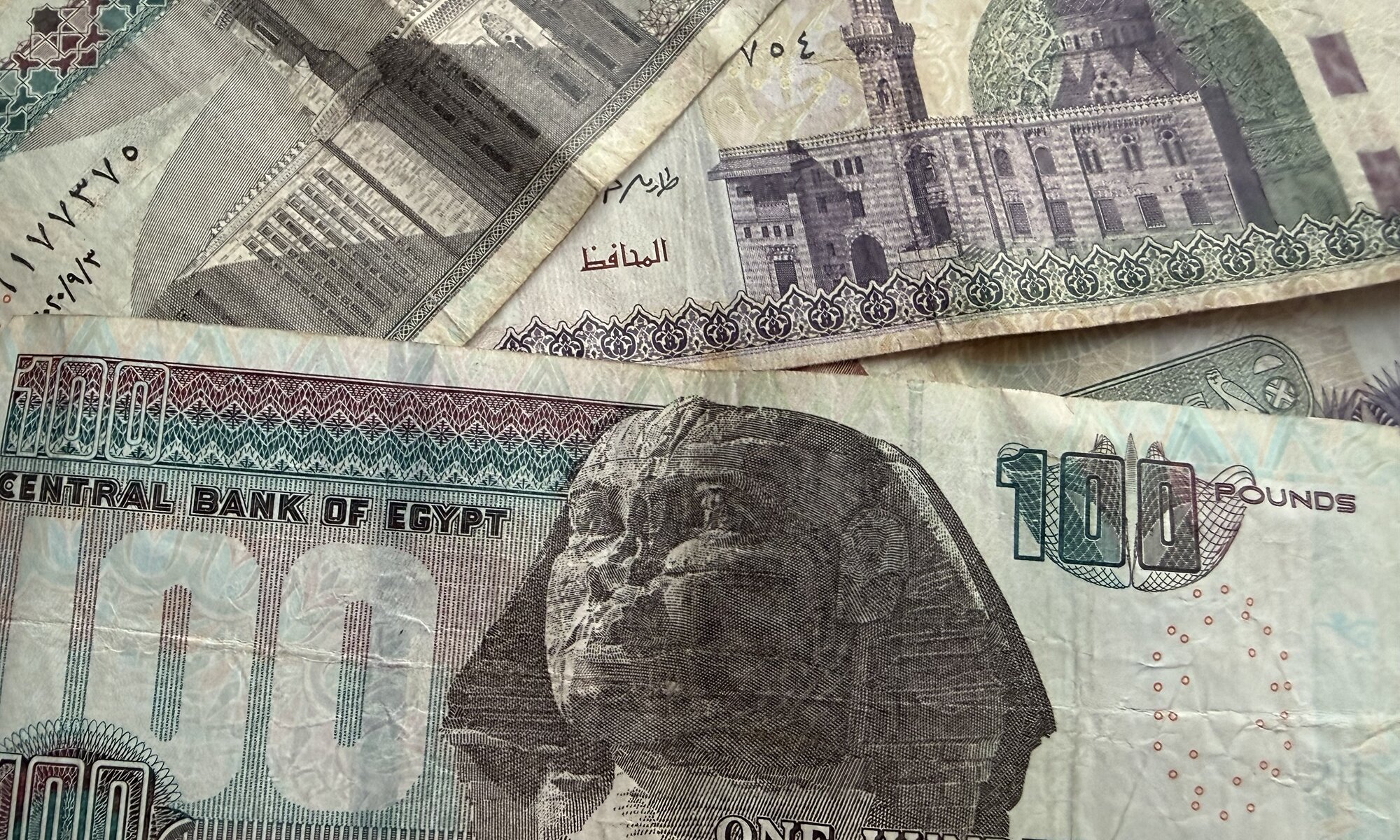The currency of Egypt is known as the Egyptian pound, locally called the ‚geneih‘. It has been the country’s official monetary unit since 1834, when it replaced the piastre as the main accounting measure under Ottoman influence. Initially, the currency was tied to sterling during the British occupation and later to the U.S. dollar before moving to a floating exchange rate in the twenty‑first century. The most recent phase of its evolution has been marked by significant devaluations as part of economic reforms aimed at stabilising the Egyptian economy and encouraging foreign investment.
The Egyptian pound is subdivided into one hundred piastres, known locally as ‚qirsh‘ or ‚ersh‘. Both pounds and piastres are used in everyday transactions, though small coins have declined in circulation due to inflation. Coins typically exist in denominations of 25 and 50 piastres, along with the one‑pound coin, which is the most widely used in daily life. Prices in local markets or cafes are often quoted in pounds and fractions of a pound, but low‑value coins are sometimes replaced by rounding practices in casual trade.
Egypt’s banknotes are colourful and distinctively designed, featuring Arabic on one side and English on the reverse. The obverse sides usually depict motifs from Islamic architecture, with intricate patterns taken from famous القاهرة mosques such as Al‑Azhar, Ibn Tulun, and Muhammad Ali’s Mosque. On the reverse, monuments from ancient Egypt dominate the imagery, including the Pyramids of Giza, the Sphinx, Abu Simbel, and the temples of Luxor and Karnak. These designs reflect the country’s dual cultural heritage – Islamic and Pharaonic – capturing Egypt’s place at the crossroads of history.
The notes are printed in several denominations, including 1, 5, 10, 20, 50, 100, and 200 pounds. Recent years have seen the introduction of polymer-based banknotes, first with the 10‑pound design and then other values, as a step towards modernising Egypt’s cash system and improving note durability. Each note carries security features such as holographic strips, watermarks, and microprinting to guard against counterfeiting. Together, the Egyptian pound’s evolution and its vivid note designs offer a fascinating window into both the country’s historical transitions and its contemporary economic identity.
جنيه مصرى
Egyptian pound
Egypt
Loading map...


